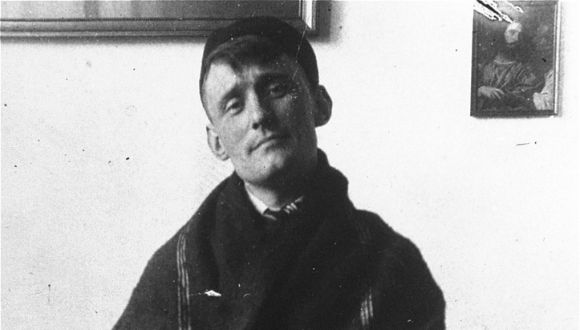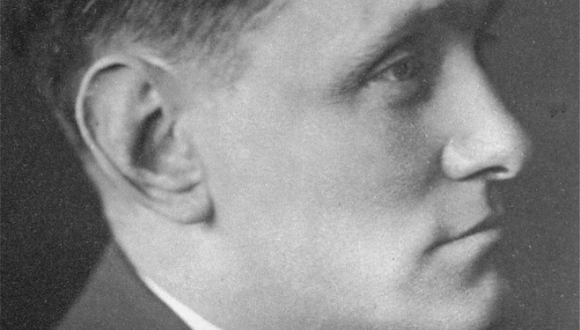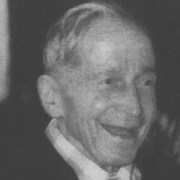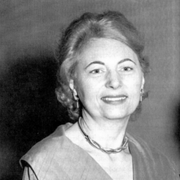Righteous Among the Nations - Willem Arondeus
"Let it be known, homosexuals are not cowards"
Willem Arondeus
Willem Arondeus was born in the Netherlands at the beginning of the 20th century, with a dream of becoming a successful artist. Arondeus identified himself openly as a homosexual and refused to deny his sexual identity and career aspirations from a young age, despite his parents’ reluctance. At the age of 17, he left his parents' house and disconnected any ties with his family. As a young artist, Arondeus didn’t earn much money and lived in poverty, but today, many years after his death, some of his works are considered a national treasure. [1] Despite his famous artworks, he is mostly known for his courageous actions as a member of the Dutch Resistance Movement against the Nazi occupation during World War II. Arondeus viewed the Nazi occupation as a direct threat, and he intended to do whatever he could to protect members of the homosexual community as well as the Dutch Jews. [2]

One of the Nazi regime’s purposes was to “cleanse” any homosexual activities. Paragraph 175 of the German constitution dealt with punishment for homosexual activity. Under the Nazi regime it was expanded to exclude all homosexual organizations under the Third Reich territory, and any gay activity between men was prohibited. [3] Anyone who was convicted of such a felony was sent to prison or a concentration camp. As a result, more than 100,000 Germans were arrested, and 50,000 were imprisoned. Furthermore, during the Nazi regime between 5,000 to 15,000 men were sent to concentration camps because of their sexual orientation and marked with a pink triangle. The prisoners were tortured, and many of them had to endure medical procedures to ‘cure’ their sexuality. [4]
The Nazi occupation began in the Netherlands in May 1940.[5] In July, the occupied Netherlands started to “fight” unnatural sex acts.[6] Arondeus, who saw the threat from the beginning, started to collaborate with the Jewish cellist Frida Belinfante, who, as a lesbian, identified herself as a member of the homosexual community as well. Arondeus and Frida decided that the only way to help the Dutch Jews and the members of the homosexual community escape Nazi persecution was to provide them with forged identity cards.[7] Together with the members of the Dutch Resistance Movement, they issued an estimated number of 70,000 forged papers. [8] The only thing that stood in their way was the Registration Office in Amsterdam, which contained the original identity cards of all Dutch civilians. Those suspected of carrying forged identity cards were tortured by the Nazis to reveal who gave them the cards. Arondeus thought that the only solution to this issue and for him to save as many people as he could, would be to blow up the Registration Office. The preparations for this operation took a long time and anyone involved was exposed to grave danger. [9]
On March 26th, 1943, a group from the Dutch Resistance Movement led by Arondeus, entered the Registration building in Amsterdam disguised as Dutch policemen.[10] They chose a late hour while the Registration Office was empty, so no innocent people would be harmed, and drugged the guards. They destroyed as many papers as they could and planted a bomb in the building.[11] The next morning on March 27th, the bomb exploded and most of the building was destroyed.[12] More than 800,000 identity cards were burned in the explosion.[13] This operation saved the lives of many people and brought the Dutch Resistance Movement a symbolic victory over the Nazi occupation.[14]
Because Arondeus and his people managed to escape that night, the Nazis promised a large sum of money to anyone who could uncover the culprits. [15] On April 1st, an anonymous source informed the Nazis about the Dutch Resistance Movement’s involvement, and Arondeus was arrested. He took full responsibility for bombing the Registration Office and refused to give up his comrades’ names. However, the Nazis found his notebook, which included all the names of the participants in the operation. Some of them managed to escape, but Arondeus and twelve more members of the Dutch Resistance Movement were eventually executed.[16]
Arondeus’s last wish, before his execution in July 1943, was to spread, through his lawyer, his message to the world. His message was:
“Let it be known, homosexuals are not cowards.”[17]

Due to homophobia, in the 1950s and 1960s gay war heroes did not get the recognition they deserved, and only in 1984 Arondeus finally received the Resistance Memorial Cross from the Dutch government.[18]
In 1986 Yad Vashem recognized Arondeus as a Righteous Among the Nations. Finally, in 1990, Arondeus’s wish came true. He was recognized not only as a war hero but as a homosexual war hero. His brave acts were revealed in a TV special, and he became a symbol of heroism for the LGBTQ community.[19]
[1] https://tau-primo.hosted.exlibrisgroup.com/permalink/f/hg7ik1/TN_cdi_proquest_miscellaneous_198676769
[3] Richard Plant, The pink triangle, (New York: Henry Holt and Company, 1986) p. 110.
[5] https://tau-primo.hosted.exlibrisgroup.com/permalink/f/hg7ik1/TN_cdi_proquest_miscellaneous_198676769
[6] Grau Gunter, Hidden Holocaust? (London: Cassell, 1995) p. 214.
[7] https://tau-primo.hosted.exlibrisgroup.com/permalink/f/hg7ik1/TN_cdi_proquest_miscellaneous_198676769
[9] https://tau-primo.hosted.exlibrisgroup.com/permalink/f/hg7ik1/TN_cdi_proquest_miscellaneous_198676769
[11] https://tau-primo.hosted.exlibrisgroup.com/permalink/f/hg7ik1/TN_cdi_proquest_miscellaneous_198676769
[12] https://tau-primo.hosted.exlibrisgroup.com/permalink/f/hg7ik1/TN_cdi_proquest_miscellaneous_198676769
[13] Flim, Michman, Bender, Gutman, Jozeph, Michman, Bert-Jan, Flim, Israel, Gutman, and Sara, Bender, The Encyclopedia of the Righteous Among the Nations: Rescuers of Jews During the Holocaust; The Netherlands, (Jerusalem: Yad Vashem, 2004) p.67.
[14] https://tau-primo.hosted.exlibrisgroup.com/permalink/f/hg7ik1/TN_cdi_proquest_miscellaneous_198676769





